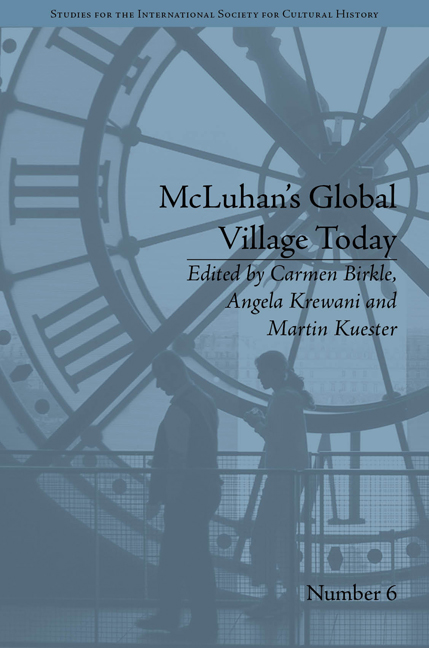Book contents
- Frontmatter
- CONTENTS
- List of Contributors
- List of Figures
- McLuhan's Global Village Today: An Introduction
- Part I McLuhan and Media Theory
- Part II McLuhan and Literature
- 7 Herbert Marshall McLuhan: Before The Mechanical Bride
- 8 ‘Cambridge was a Shock’: Comparing Media from a Literary Critic's Point of View
- 9 Master, Collaborator and Troll: Marshall McLuhan, Wilfred Watson and Brian Fawcett
- 10 Taking Action: What Comics Demand of their Recipients
- Part III McLuhan and Technical Media
- Notes
- Index
10 - Taking Action: What Comics Demand of their Recipients
from Part II - McLuhan and Literature
- Frontmatter
- CONTENTS
- List of Contributors
- List of Figures
- McLuhan's Global Village Today: An Introduction
- Part I McLuhan and Media Theory
- Part II McLuhan and Literature
- 7 Herbert Marshall McLuhan: Before The Mechanical Bride
- 8 ‘Cambridge was a Shock’: Comparing Media from a Literary Critic's Point of View
- 9 Master, Collaborator and Troll: Marshall McLuhan, Wilfred Watson and Brian Fawcett
- 10 Taking Action: What Comics Demand of their Recipients
- Part III McLuhan and Technical Media
- Notes
- Index
Summary
Introduction
The term comic denotes an originally humorous form of picture story that, in today's form, emerged at the turn of the twentieth century, in which a sequence of scenes is depicted which the reader's mind reconstitutes into an entertaining ‘film’. In doing so, the individual elements presented in the comic are transformed into a sequence of events only through the personal effort of the reader. Whether it is just a few outlines or a photorealistic comic, the depicted objects offer stimuli which challenge the reader to put him or herself in the situation shown in the scene and to take into account the suggested elements and elaborate on them.
The notion of the reader perceiving the parts in order to reconstruct a whole is known as closure, a term that was popularized by Marshall McLuhan in the field of media theory. This essay will analyse closure, along with the two other key principles of the comic form, the cartoonish representation and the sequential arrangement of individual, framed panels, against a neuroscientific background. These will be illustrated with examples from a Scottish comic.
Three Main Characteristics of Comics
Cartoonish Depiction
Cartoonish depiction in comics means a concise depiction which is limited to a few fundamental, iconic characteristics and emotions. Consequently, the depicted images appear concrete enough for the reader to identify the objects; at the same time they appear abstract enough for a wide audience to relate to what is being portrayed.
- Type
- Chapter
- Information
- McLuhan's Global Village TodayTransatlantic Perspectives, pp. 105 - 116Publisher: Pickering & ChattoFirst published in: 2014



